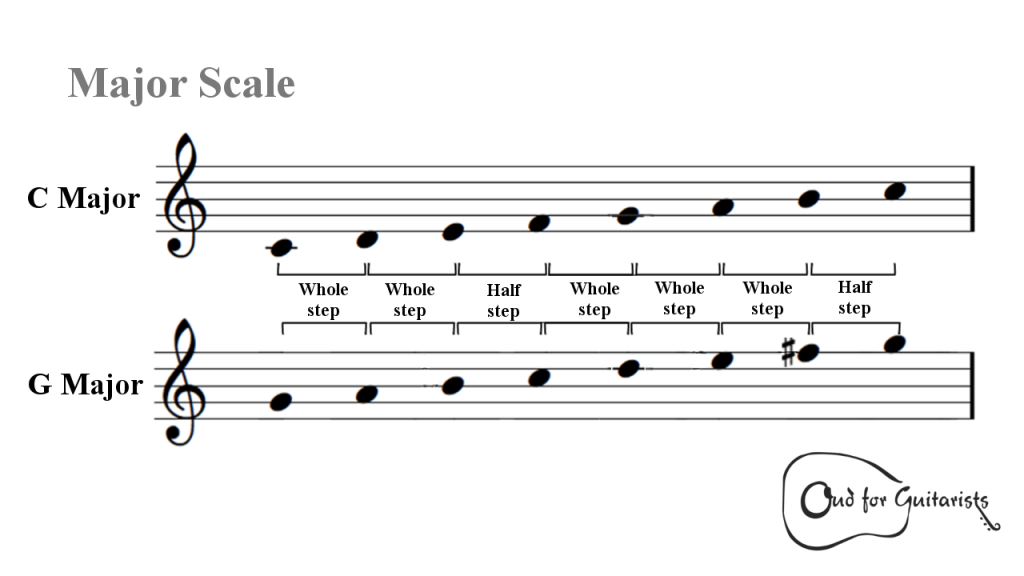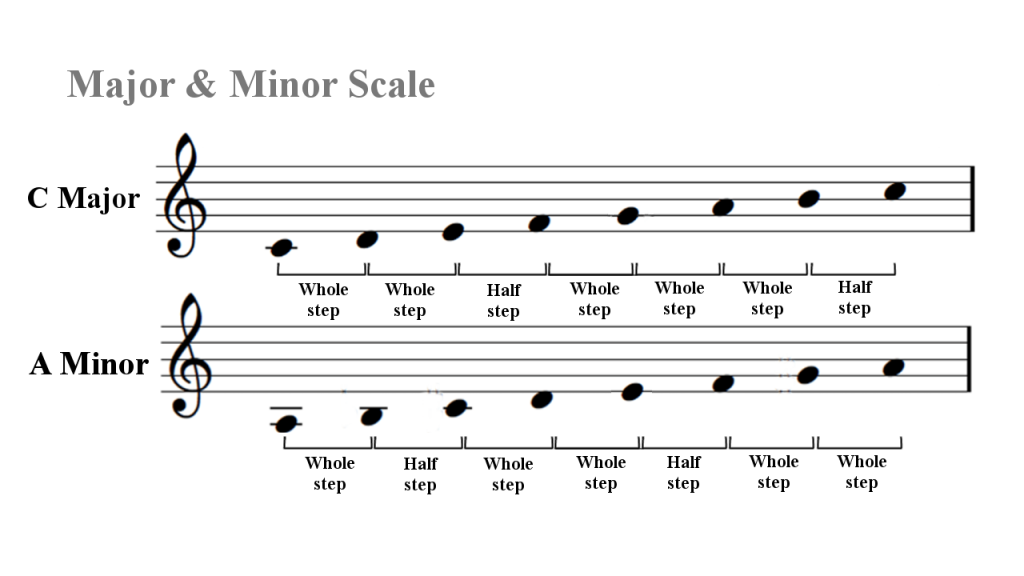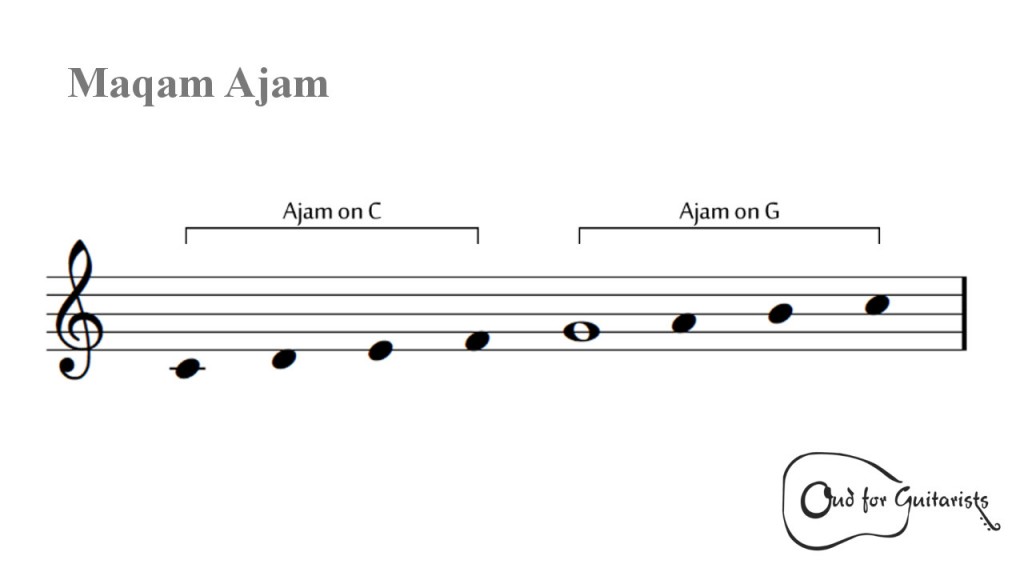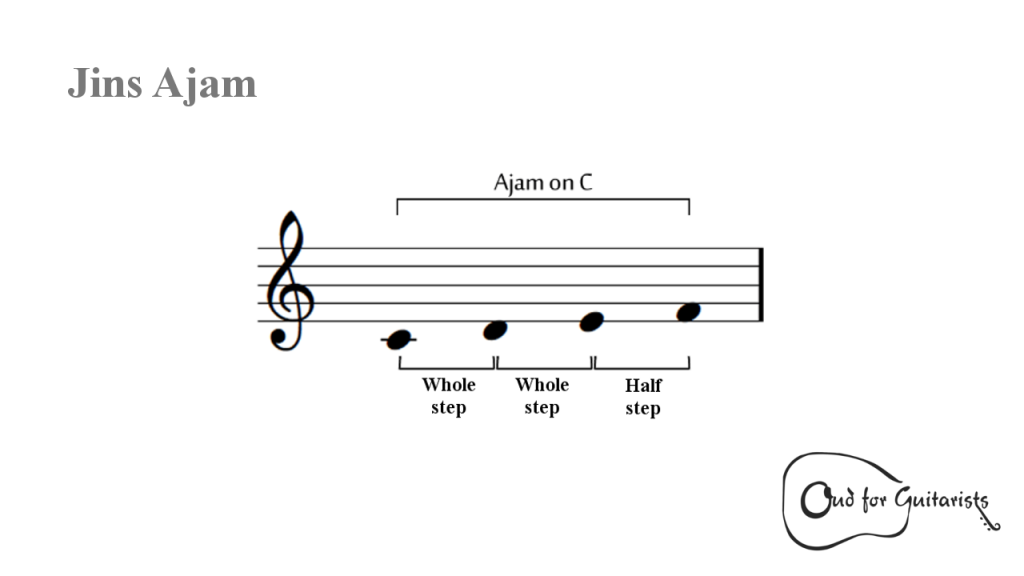So you heard “maqam = musical scale.” And did you know this idea can hinder you from learning maqamat?
In this video, you will see a more accurate way of looking at maqamat so you can learn maqam music properly and more easily, and start playing them authentically.
*For those who want to read the content instead of watching the video, you can find the content by scrolling down.
Mentioned in the Video
Last week’s video – Oud Maqam Learning Part 1: Maqam Learning Made Easy!
Video Content
First, in Western music, there is major scale and minor scale. In general, a major scale sounds happy, and a minor scale sounds sad or mellow. Within a major scale, there are C Major, D Major, E Major… but the scale or pattern of distances between the notes stay the same.
For example, look at C major and G major. The distances between the notes for C major are whole step, whole step, half step, whole step, whole step, whole step and half step. Same for G major: whole, whole, half, whole, whole, whole, half. This is called the intervallic structure. C major and G major share the same intervallic structure.

And the intervallic structure of a major scale and the intervallic structure of a minor scale are different. This difference makes the different feelings of these 2 scales.

Intervallic Structures in Maqam Music
In Middle Eastern music, we focus more on these intervallic structures and the feelings that they create, and less on which individual notes are in each set of 7 notes.
Arabic music, for example, has over 50 maqams, or maqamat, which is the plural form of maqam. This means there are over 50 versions of intervallic structures that are used in Arabic music. Same with Turkish music. Turkish music has over 50 makamlar, and Persian music has just over 10. These numbers may vary, and each one has its own rules about how to move from 1 maqam to another, but the rules also vary, depending on which Oud player you ask and how they define them.
Now learning 50 maqamat and their rules sounds crazy, but it doesn’t have to be. This is where seeing a maqam as a scale can prevent you from learning maqamat the way they should be learned.
The Easier Way to Learn Maqamat
Learning a Western scale is like learning note by note. But learning an Middle Eastern maqam is like learning a set of a few notes at a time. This smaller set of notes is called Jins or Ajna for plural.
Take Maqam Ajam for example. Yes, each maqam has a special name in Middle Eastern music. Maqam Ajam looks identical to the Western C Major scale. And this maqam is made up of Jins Ajam on C and Jins Ajam on G.

Again, just like maqamat, every jins has a special name, and a jins is referring to a particular intervallic structure or the pattern of distances between notes in the few notes. A jins can contain 3, 4 or 5 notes. Jins Ajam, for example, has an intervallic structure of whole step, whole step, half step. And this structure makes the happy feeling of Jins Ajam.

Now, there are 9 commonly used ajna in Arabic music. They are Ajam, Nahawand, Rast, Bayati, Sikah, Saba, Kurd, Nawa Athar and Hijaz, and 3 less common ajna Saba Zamzam, Athar Kurd and Mustaar. So the 50 maqamat I mentioned earlier are different combinations of these ajna.
And as I mentioned, there are rules around how to move from 1 maqam to another. This movement is called modulation, and seasoned Oud players would string various maqamat together flawlessly and create a beautiful piece. Now, because we have over 50 maqamat to deal with, learning rules for each maqam is overwhelming. But using ajna, you can learn general principles that help you anticipate modulations and even create your own modulations. We will show these principles in detail in the Maqam Mastery Program.
If we use the language metaphor from last week’s video, “Maqam Learning Made Easy”, each jins is like a word. Put a few jins together, you have melodic grammar, called maqam. So learning maqam jins by jins makes a lot more sense in Middle Eastern music than learning maqamat note by note and goes a long way in learning how to develop melody for each maqam. And we will go more in detail for each jins and each maqam in the Maqam Mastery Program.
So I hope this video gave you a good, solid introduction to your maqam music learning. Like I mentioned in last week’s video, to be able to play the Oud to express yourself, you need to learn the melodic grammar of maqamat and how to develop melodies and make modulations authentically. Now, ready to get started?
In the next video, we will get some common hurdles and questions in learning maqamat out of the way, so you can finally hear a melody, hear it and play it authentically. See you there!






The instructions are clear, and not rushed through. It makes it easy to follow regardless of your musical background, and by the end you actually feel like you’ve learned something.
Thank you for the great video. There is only one simple thing that I like to point out. The plural for Jins is Ajnas not Ajna.
Thank you for the correction. Unfortunately, my Arabic is not very good. 😉